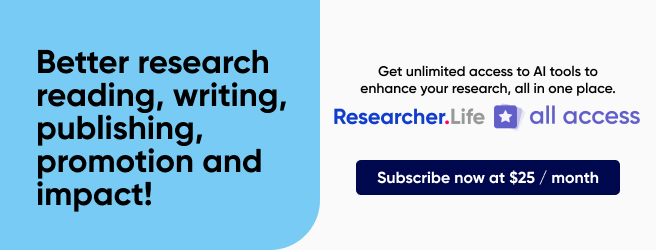Guiding right: Our top 10 questions and answers on submission guidelines in 2020

You’ve done the hard work of completing your study, and then, perhaps the equally hard work of writing the paper. You’re ready to move on to your next research milestone or simply take a breather. But you’re not quite done yet – because there’s the simple, nay, complex matter of submitting the manuscript to your selected journal. You need to go through all the guidelines (and there are several) and ensure your manuscript adheres to them. ‘Can manuscript submission be made easier,’ you wonder.
Through the year, we receive a steady stream of queries from researchers just before, during, or right after submission, wishing to understand the nuances of various submission guidelines, or to correct a submission error. As an especially challenging year comes to a close, we have curated some of the popular queries here and make a wish ourselves: ‘May next year be less challenging, even when it comes to manuscript submissions.’
1. Should you be guided by the page count or the word count?
Among the many submission guidelines, page/word count is a critical one. Journals insist on a specific limit based on the nature of the research articles they publish, and therefore, the profile of their readers. Some ‘grace’ is allowed, but manuscripts that substantially exceed the limit are almost certainly rejected. With an intent to do due diligence as well as to avoid desk rejection, this researcher wanted to know which limit he should follow: the page limit or the word limit. Find out for yourself here: What should I adhere to, the page limit or the word limit?
2. How much similarity is acceptable for a new submission?
While plagiarism is downright unethical, journals are accommodating to some extent for a new submission. That said, you should aim to reduce the similarity percentage as much as possible before submitting. What is the threshold – and what if you just can’t reduce it any further? Know more here: What is the acceptable similarity percentage for a review paper?
3. What is an ICMJE form – and how do you complete and submit it?
At the time of submission, journals also need you to make ethical declarations about your research. This researcher wanted to know about the International Council of Medical Journal Editors (ICMJE) statement, which needs you to mention any conflicts of interest (CoI) in your research. Find out more about the form, including the specifics of filling and submitting it: What is an ICMJE statement when submitting to an Elsevier journal?
4. What if your research paper includes code?
If your research is in computing (or involves some aspects of it), you’ll probably need to provide the relevant code at the time of submission. How do you include this in the journal form? Get the right inputs here: What is meant by 'Code availability (software application or custom code)' during submission?
5. What if the figure and its details just don’t fit on one page?
What if you’ve tried everything to fit a large figure on the page, but it refuses to fit, because there’s also the matter of the caption and the footnote? Should you go ahead and submit as is – or will the journal ‘penalize’ you for this ‘lapse’? This researcher was in a fix, given how exacting journal guidelines are. Here’s what we advised: What should be done when the figure is large and there is no space below to write both the caption and the footnote?
6. What if you mistakenly selected a wrong article type?
There are so many inputs needed during submission that many researchers are likely to make a mistake, if not several. But what if it’s a crucial mistake, such as mentioning the wrong article type? Do you get a chance to ‘undo’ – or is your manuscript headed for desk rejection? Find out how we allayed this researcher’s fears: What do I do if I chose the wrong article type when submitting to a Springer journal?
7. What if your paper has two first authors but the submission form only allows one?
At times, a paper can have two first authors, and some journals do have a provision for this. But what if your selected journal doesn’t? How do you proceed? To know more, proceed here: How do I let the journal know of two first authors in case their submission system does not allow this?
8. What do you do if the status of your submission to the journal is not reflected in the preprint repository associated with the journal?
Here, the issue was not with the selected journal, which had rejected the manuscript, but with the associated preprint repository, which hadn’t made the subsequent update in the system. As a consequence, the researcher wasn’t able to submit the manuscript to another journal. Here’s what we suggested: What should I do if the same submission to a new journal is rejected because the information was not updated in the associated preprint system of the previous journal?
9. What do ‘unvalidated’ references mean in the journal check for a revised manuscript?
You, of course, want to submit an impeccable first manuscript – to enable it to clear the initial editorial screening and proceed to peer review. But you also want to submit a perfect revised manuscript – to enable it to obtain the coveted ‘Accepted’ decision and proceed to your final goal, publication. But what if the journal check identifies some issues with the revised manuscript? This researcher was worried about the identification of ‘unvalidated’ references by the journal tool. Here’s how we calmed his concerns: What will happen if I make a mistake in the references format in the revised manuscript?
10. What if a journal announces it is going open access (OA) when you are about to submit a revised manuscript?
Many journals are going OA to make published research accessible to more readers. But what if the journal makes this announcement when you are about to submit a revised manuscript? This researcher was in a dilemma, because with OA, comes the matter of article processing charges (APCs), which the researcher needed to pay – not something he was looking to do earlier. How did we suggest he proceed? Access this question: Do I have to agree to pay the open access (OA) fee to a journal that became OA during my submission process?
Apart from these queries, you may also wish to go through some of our popular articles around manuscript submission here.
- Important pre-submission checks to help you sail through peer review
- Ethical declarations that authors should provide at the journal submission stage
- 10 Tips to write an effective cover letter for journal submission (Download - cover letter template)
And if you have a query yourself, post it in our Q&A Forum.
Happy submissions! And also, Happy Holidays!
Comments
You're looking to give wings to your academic career and publication journey. We like that!
Why don't we give you complete access! Create a free account and get unlimited access to all resources & a vibrant researcher community.

Subscribe to Journal Submission & Peer Review










